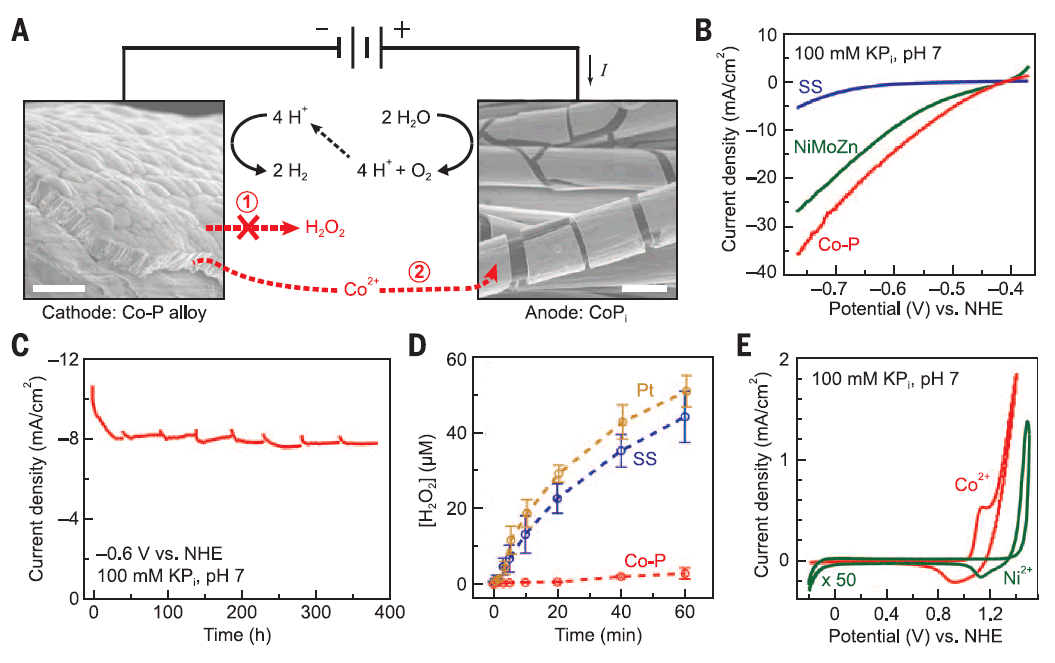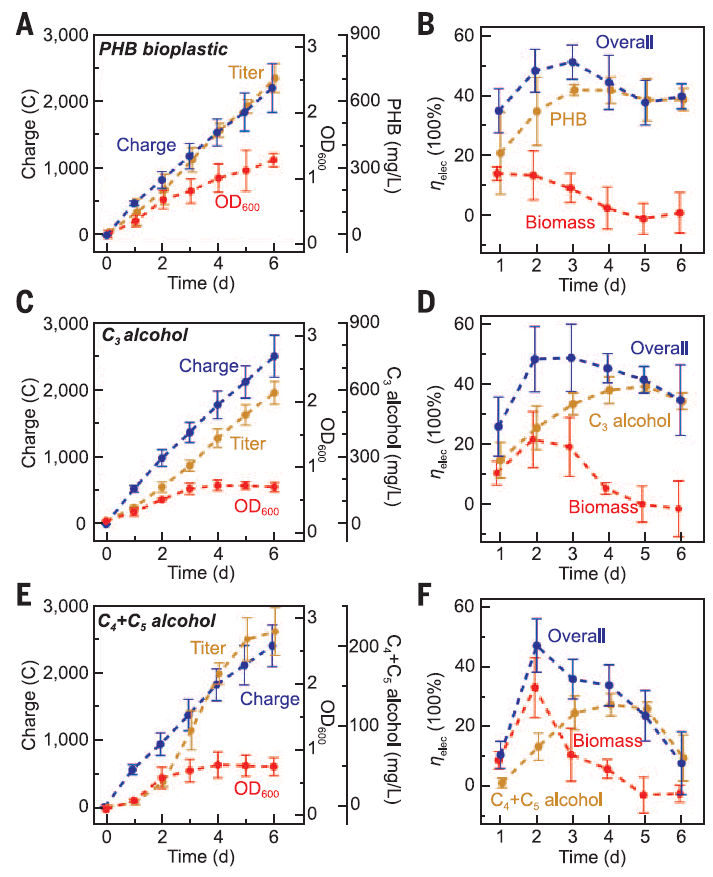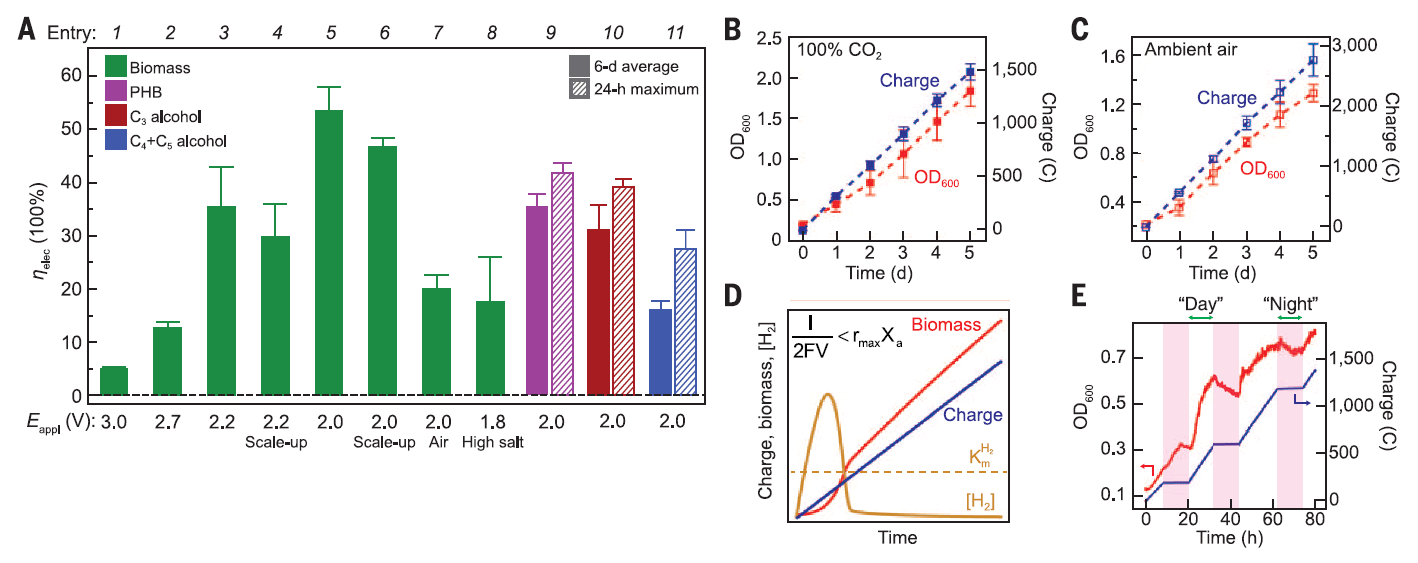Artificial system surpassed natural leaf in photosynthesis efficiency
For the first time, scientists were able to effectively combine chemical electrolysis with the activity of bacteria. The system produces alcohol and other substances literally "from the air"

Researchers at Harvard University have created a bionic system that converts and stores solar energy in a chemical form using a hybrid mechanism of inorganic materials and living microorganisms. This scheme helps to solve two problems at once: 1) the preservation of solar energy, which is produced in abundance during the daytime and which is not enough in the evening; 2) elimination of excess CO 2 from the atmosphere.
The new invention is superior in efficiency to all existing similar developments and even surpasses photosynthesis in nature. The scientific article was published on June 3 in the journal Science (doi: 10.1126 / science.aaf5039).
“I think this is actually quite an exciting study,” commented the work of colleagues Johannes Lischner from Imperial College London. “Converting sunlight to high-efficiency chemical fuel is something like the Holy Grail for renewable energy.”
')
The bionic system is a jar with two electrodes, water and a colony of bacteria Ralstonia eutropha . An electric current is passed through the electrodes and decomposes the water molecules, releasing hydrogen gas.

The resulting hydrogen could already be used as fuel, but the scientists decided to complicate the system in order to make it more efficient. At the next stage, Ralstonia eutropha bacteria, which feed on hydrogen and CO 2 from the atmosphere, come into play . Thanks to these nutrients, the colony of bacteria is actively increasing in size. Among the waste products of microorganisms are various useful chemicals. Scientists have experimented with genetic modifications and brought out bacteria that produce different types of alcohol (C 3 and C 4 + C 5 on the charts) and plastic precursors (PHB on the charts).

Scientists have been trying to grow bacteria on electrodes for decades to get them to take part in the chemical chain of reactions, but in this process there were constantly various problems that prevented the creation of a truly effective system.
The main of these problems are the leaching of heavy metals from electrodes, as well as the appearance of oxygen in active form. Both of these processes inhibit the life of happy, healthy bacteria. An important discovery by Harvard chemists was the use of a cobalt-based electrolysis system with a cathode and anode. Essentially, the cathode and anode produce a synergistic effect, being a self - healing system . If one degrades, the second supplies it with substances, and vice versa.
According to independent experts who are not related to this study, scientific work is truly revolutionary. For the first time in history, scientists managed to combine chemical electrolysis with the activity of bacteria with high efficiency of energy conversion and conservation. Work in this direction has been going on since the 1960s.

The authors of the study were able to achieve an efficiency of CO 2 recovery of about 50% with the production of bacterial biomass and liquid alcohol. 180 grams of CO 2 is consumed per 1 kWh of electricity.
If you combine this system with conventional photocells, then the CO2 recovery efficiency will be about 10% - this is higher than in natural photosynthesis!
Scientists suggest that their system of efficient electrolysis with the conversion of energy into liquid fuel will be used primarily in developing countries where there is no developed electrical infrastructure to distribute and store the electricity generated by solar panels in the daytime.
In the future, technology may find very wide application. It is very important that bacteria are amenable to genetic engineering and are suitable for the production of not only alcohol, but also other materials. All this can be obtained in unlimited quantities from air and sunlight, as Brendan Colón, one of the authors of the scientific work, said in a scientific podcast .
The system solves the problem of storing the generated electricity, but also helps to get some benefit from the excess CO 2 that humanity releases into the atmosphere, burning millions of tons of hydrocarbons annually.
Source: https://habr.com/ru/post/394769/
All Articles